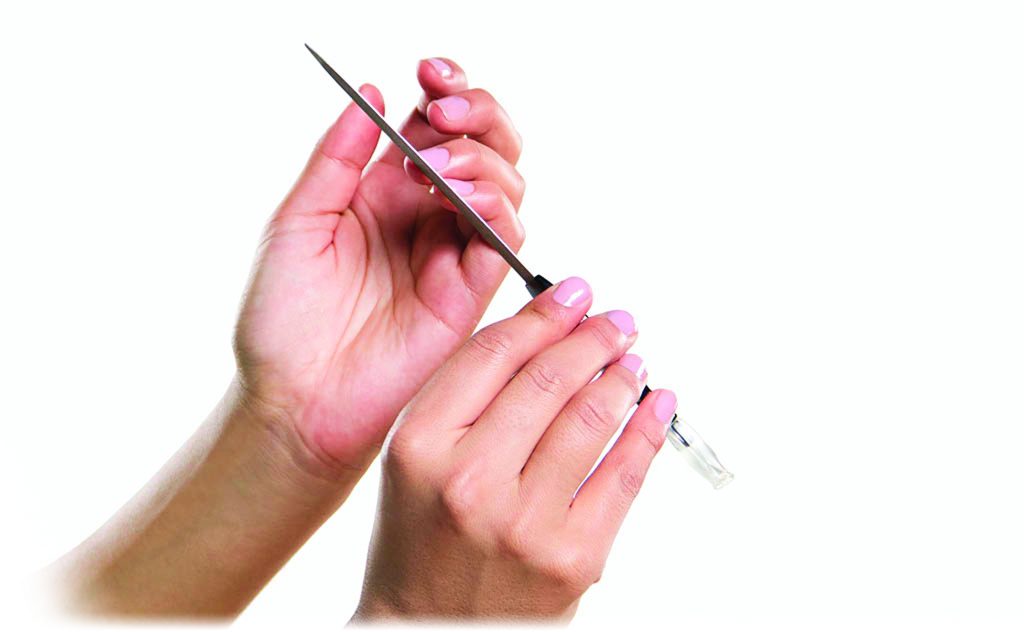Route to Shiny Healthy Nails; What do they indicate?

By Pushpa Bhatia
Nails aren’t just a great site for body art. They offer a protective outer layer for your fingers and toes and are even indicators to any underlying health problems. If you notice sudden changes in your nails it would be wise to consult a doctor. Here is what to watch out for:
Discoloration: Barring a few occasional white spots, which nearly mean injury to the nail bed, white or yellow spots on the nails are characteristic of a condition known as Terry’s nails, which could be a warming sign for liver disease, kidney failure or a heart condition.
Yellowing of the nails may indicate a fungal infections, psoriasis or a thyroid-related disease, white-green nails are often in people who work in damp environments or have a loose nail- bed nails going blue could be your body’s reactions to cold temperature or low oxygen levels in your red blood cells and are sign of breathing problems.
Discoloration is also caused by nail polish which contains formaldehyde, a preservative that has been identified as a human carcinogen by the international agency for research on cancer.
Smoking makes your nails discoloured and they tend to look yellowish, white nails show that the person is anaemic.
Unusual texture: If you have ever noticed a thick curling overgrowth in your nails it could either be a side- effect of diseases such as psoriasis or hystrix or lack of care. Low levels of protein, zinc and iron cause vertical ridges. If you have low thyroid levels supplementary with thyroxine would help consuming coriander juice regularly (made from 100 gms of coriander leaves) and adding lime juice to all your vegetables and salads could help prevent an iron deficiency. Eggs, fish, most lentils and nuts such as almonds, walnuts, sprouts will give you sufficient protein and zinc.
While vertical nail ridges are mostly harmless horizontal ridges (known as bean’s lines) could indicate injury to the nail, nutritional deficiency infection or high fever. Watch out for rounded nails, which could indicate intestinal disorders problems with the endocrine system or even lung cancer.

Lines: White lines across the width of the nail bed (known as Muehrcke’s lines) are associated with renal failure and sickle cell anaemia, lines that grow out along with the nail are associated with arsenic or thallium poisoning. Dark stripes running down the nail can be an indication of skin cancer.
Split/peeling nails: Onychoschisis is a condition triggered by an iron deficiency, characterised by fingernails separating from the nail bed and along with the ridging of the nail plate, it is called brittle nail syndrome. Beware of it because it can lead to injury, infection or drug reactions.
A low dose of thyroid hormone under medical supervision could be useful in correcting brittle nails if they supper from hypothyroidism.
Dry nails: Nails tend to get dry when exposed to water. So to lock in the natural moisture of the nails, simply massage your nails with any good quality oil every day. It prevents your nails from getting dry and brittle. You can apply lukewarm oil and leave it overnight. It softens the nails and cuticles.
Practise good nail hygeine and keep finger nails dry and clean. Avoid using chemicals on your nails. Simply massage your nails with any good quality oil every day.
Poor growth: Sometimes we hear complaints like “my nails just don’t grow” or “my nails grow very slowly.” Remember that nails grow slowly in the cold seasons and faster when it gets warmer. Nails grow about 0.6 to 1.3 millimetres in a week. Insufficient amount of proteins or vitamin A can slow down the rate of nail growth. Taking some allopathic medications can also do the same.
Hangnails: Sometimes you have dried skin tags at the sides of the nails called hangnails. This happens because the skin around the nails has dried out. It could be due to a vitamin C deficiency or an undersupply of folic acid and protein in your diet. You could supplement with green leafy vegetables as they are rich in potatoes.
Use protection: Remember to wear a pair of mittens or gloves (rubber, vinyl or plastic gloves) while cleaning dishes in hot, soapy water or doing gardening.

Consider your diet: Add vitamins and supplements like biotin, vitamin E and fish oil to your daily regimen. One of the most common items that has all these ingredients is yoghurt. Also eat foods rich in protein like beans, fish and nuts.
Always moisturise: Use a mix of almond and avocado oils to keep cuticles and nails hydrated before you go to sleep. If these oils are not available then you can use any nutrient-rich oil. In a pinch you can even use a dab of lip balm.
Remember your nails, hair and skin are reflections of what’s inside you. You must listen to it.
Tips for healthy, strong nails
- Keep your hands very clean.
- Treat them gently.
- Trim your nails regularly.
- Take proper care of your nail tools.
- Never forget to use a base coat while painting your nails.
- Don’t cut the cuticles – instead push back the cuticles once a week.
- Beware of toxic chemicals (like dibutyl phthalate, formaldehyde and toluene) while purchasing nail polish.
- Don’t forget to apply a top coat as it seals the polish’s colour and adds a much needed gloss finish to your digits.
- Give your nails a break. Going from one strong polish colour to another without giving your nails a break can dry them out, turn them yellow and over time even weaken the structure of the nail.










